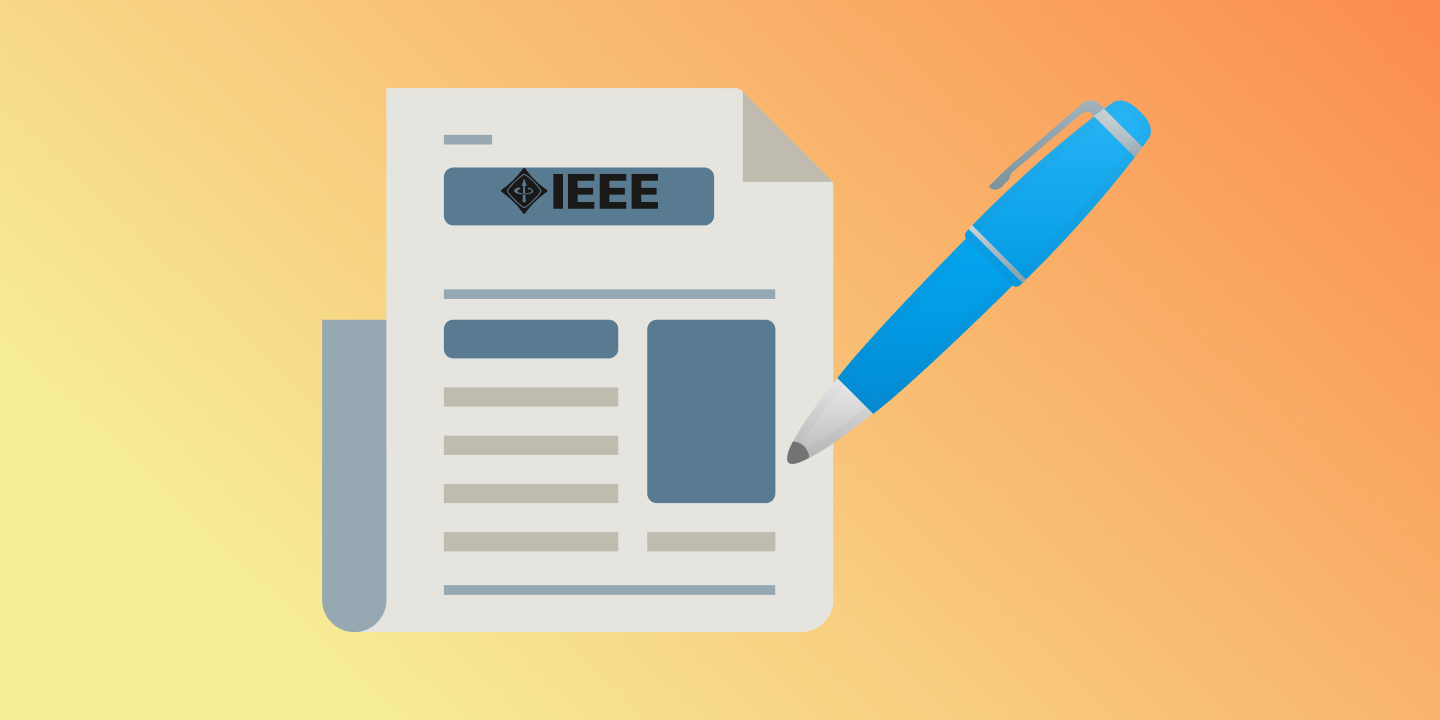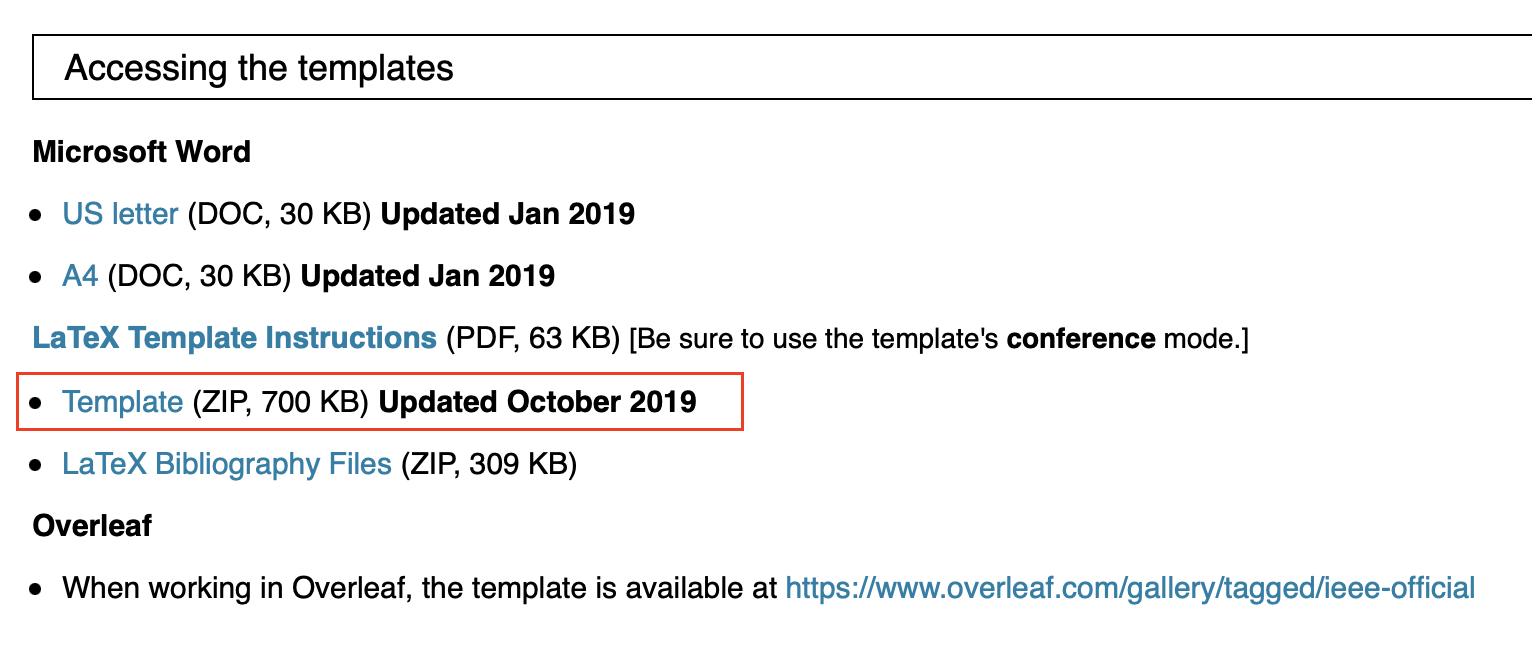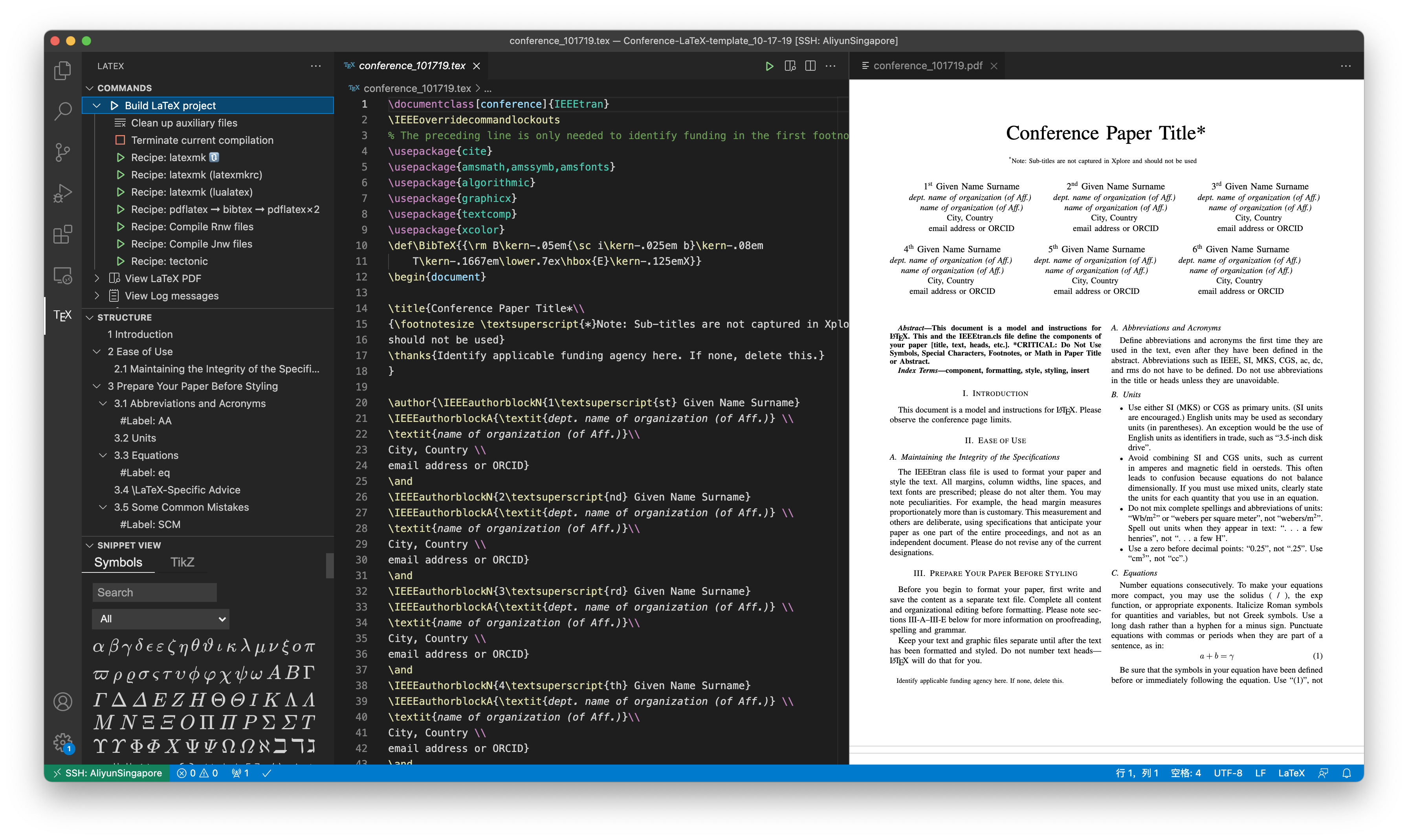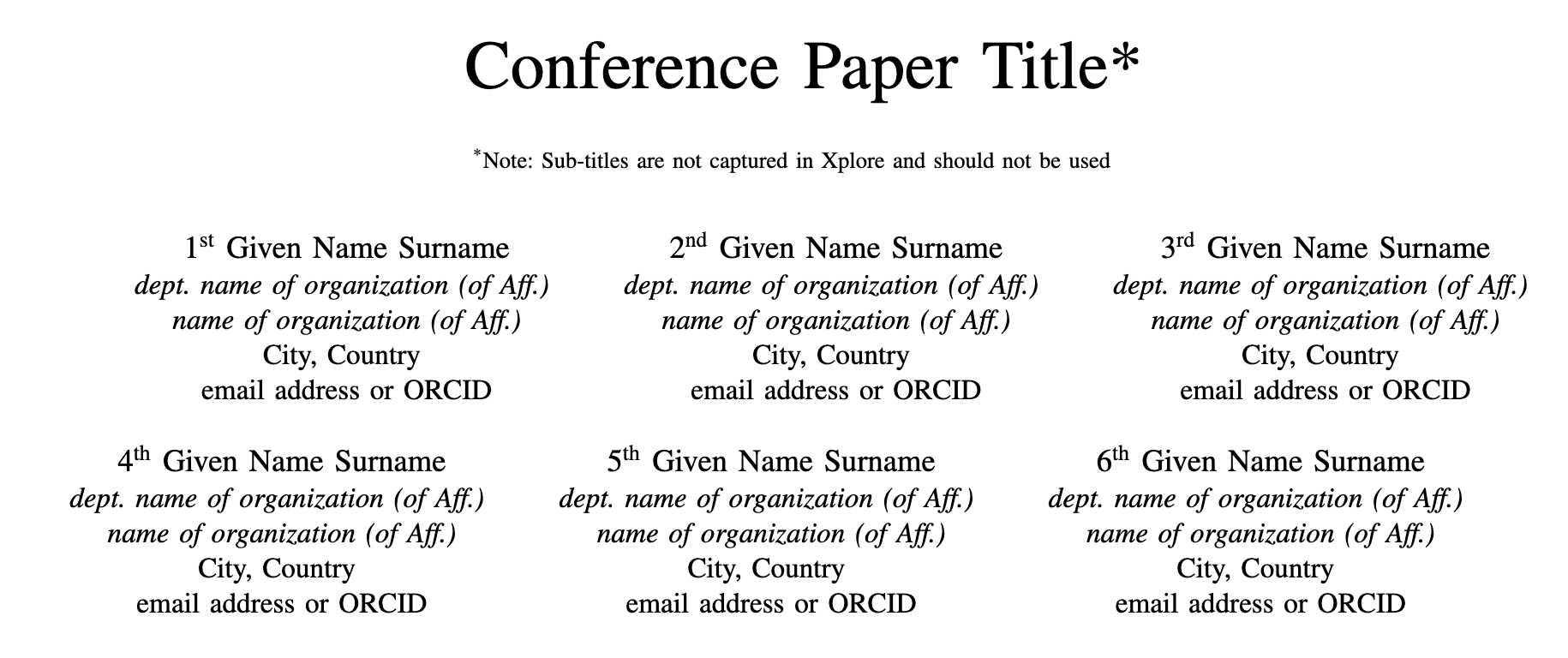IEEE 会议论文 LaTeX 模版的使用
在使用 IEEE 会议论文的 $\LaTeX$ 模版前,首先需要配置 $\LaTeX$ 环境。前一篇文章已经详细地介绍了环境的配置,请确保在继续阅读前已经根据前一篇文章的相关步骤配置了 $\LaTeX$ 环境。
值得注意的是,编译 IEEE 的模版无需中文字体以及 XeLaTeX 工具,无需配置相应的 Recipes,因此可以跳过前一篇文章的 尝试编译一个例子 小节。
模版下载
首先我们需要下载 IEEE Conference Proceedings 的 $\LaTeX$ 模版。该官方链接提供了模版的 Word 和 $\LaTeX$ 版本的下载链接。
在 Ubuntu 中,使用以下命令下载并解压该模版:
1
2
3
wget https://www.ieee.org/content/dam/ieee-org/ieee/web/org/pubs/conference-latex-template_10-17-19.zip
unzip conference-latex-template_10-17-19.zip
rm conference-latex-template_10-17-19.zip
也可以使用 Overleaf 在线编辑论文, 该链接提供了 Overleaf 可使用的 IEEE 会议模版。
模版的编译
在 VS Code 中打开该模版文件夹,打开 conference_101719.tex 文件,右上角点击运行,直接编译该模版,我们得到以下结果:
模版的使用
参考文献
对于 $\LaTeX$,我们一般在谷歌学术或者知网导出 BibTex 格式的参考文献,而 IEEE 会议模版默认使用的参考文献为 \bibitem:
1
2
3
4
5
6
7
8
9
\begin{thebibliography}{00}
\bibitem{b1} G. Eason, B. Noble, and I. N. Sneddon, ``On certain integrals of Lipschitz-Hankel type involving products of Bessel functions,'' Phil. Trans. Roy. Soc. London, vol. A247, pp. 529--551, April 1955.
\bibitem{b2} J. Clerk Maxwell, A Treatise on Electricity and Magnetism, 3rd ed., vol. 2. Oxford: Clarendon, 1892, pp.68--73.
\bibitem{b3} I. S. Jacobs and C. P. Bean, ``Fine particles, thin films and exchange anisotropy,'' in Magnetism, vol. III, G. T. Rado and H. Suhl, Eds. New York: Academic, 1963, pp. 271--350.
\bibitem{b4} K. Elissa, ``Title of paper if known,'' unpublished.
\bibitem{b5} R. Nicole, ``Title of paper with only first word capitalized,'' J. Name Stand. Abbrev., in press.
\bibitem{b6} Y. Yorozu, M. Hirano, K. Oka, and Y. Tagawa, ``Electron spectroscopy studies on magneto-optical media and plastic substrate interface,'' IEEE Transl. J. Magn. Japan, vol. 2, pp. 740--741, August 1987 [Digests 9th Annual Conf. Magnetics Japan, p. 301, 1982].
\bibitem{b7} M. Young, The Technical Writer's Handbook. Mill Valley, CA: University Science, 1989.
\end{thebibliography}
为了让该模版支持 BibTex 格式的参考文献,我们首先在项目文件夹中新建一个文件,命名为 references.bib。然后在 tex 文件中,将上述代码替换为:
1
2
\bibliographystyle{IEEEtran}
\bibliography{references}{}
注意,替换掉原来的参考文献部分后,在正文中的引用位置 \cite{} 也要删除。然后我们在 references.bib 中添加 BibTex 格式的参考文献,例如
1
2
3
4
5
6
7
8
9
10
@article{creswell2018generative,
title={Generative adversarial networks: An overview},
author={Creswell, Antonia and White, Tom and Dumoulin, Vincent and Arulkumaran, Kai and Sengupta, Biswa and Bharath, Anil A},
journal={IEEE Signal Processing Magazine},
volume={35},
number={1},
pages={53--65},
year={2018},
publisher={IEEE}
}
然后在正文中需要引用的地方标注 \cite{creswell2018generative} 即可引用。$\LaTeX$ 会帮助我们自动地编号参考文献,并按照正文中引用顺序列在文章的最后。
作者样式
在该模版中,作者地默认样式如下:
但有时多个作者有着相同的地址以及电子邮箱后缀,我们希望作者姓名能够放在一行,然后接下来若干行是地址,最后是电子邮箱地址。
原 *.tex 文件中,作者信息的相关内容为
1
2
3
\author{
...
}
我们将这部分内容删除,替换为以下内容:
1
2
3
4
5
6
7
8
9
10
11
12
13
14
15
16
17
18
19
\author{
\IEEEauthorblockN{
Author1\IEEEauthorrefmark{1},
Author2\IEEEauthorrefmark{1},
Author3\IEEEauthorrefmark{1}\textsuperscript{\textasteriskcentered},
Author4\IEEEauthorrefmark{2} and
Author5\IEEEauthorrefmark{3}
}
\IEEEauthorblockA{
\IEEEauthorrefmark{1}School of XXX, XXX University, Province, P.R. China\\
\IEEEauthorrefmark{2}School of XXX, XXX University, Province, P.R. China\\
\IEEEauthorrefmark{3}XXX\\
Email:
[email protected],
\{author2, author3\}@xxx.edu.cn,
[email protected],
[email protected]
}
}
此时,作者上标 \IEEEauthorrefmark 都是符号,我们如果想用数字,则在 \author{} 前添加以下内容:
1
2
3
\DeclareRobustCommand*{\IEEEauthorrefmark}[1]{%
\raisebox{0pt}[0pt][0pt]{\textsuperscript{\footnotesize #1}}%
}
此时的作者样式:




